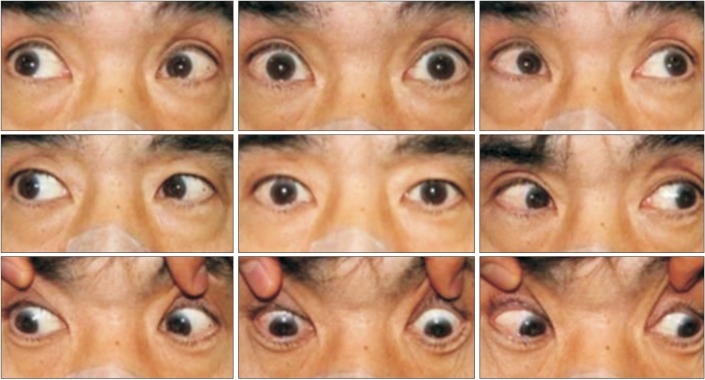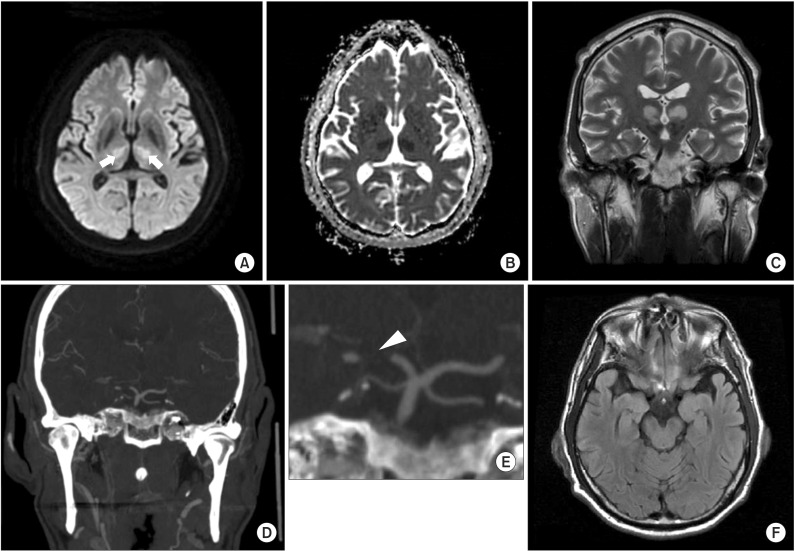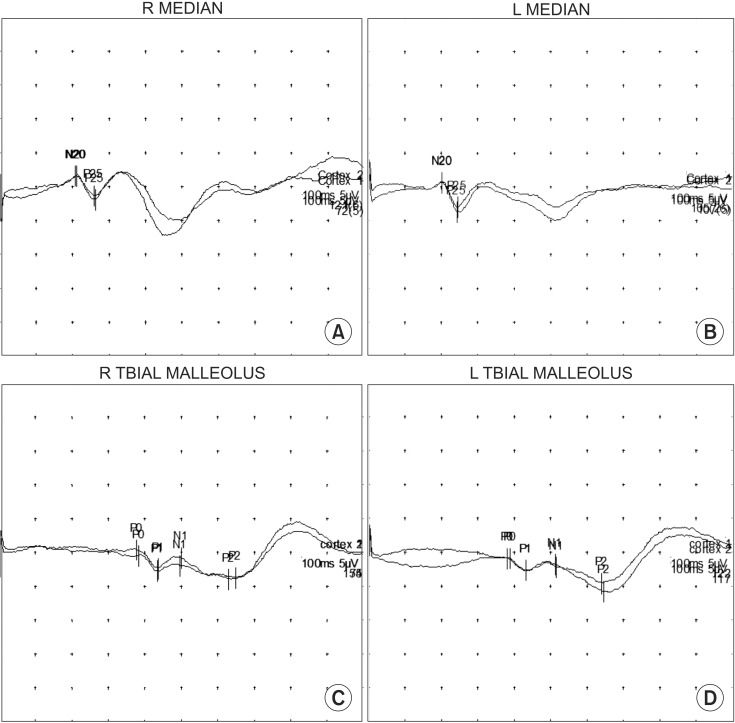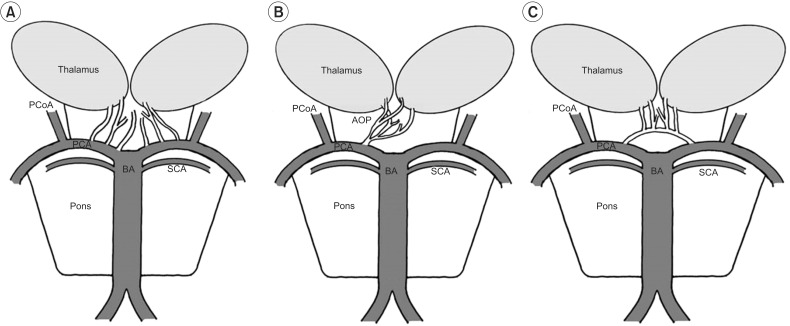Ann Rehabil Med.
2016 Aug;40(4):751-756. 10.5535/arm.2016.40.4.751.
Acute Pseudobulbar Palsy After Bilateral Paramedian Thalamic Infarction: A Case Report
- Affiliations
-
- 1Department of Rehabilitation Medicine, Konkuk University Medical Center, Konkuk University School of Medicine, Seoul, Korea. leej@kuh.ac.kr
- 2International Healthcare Research Institute, Konkuk University, Seoul, Korea.
- KMID: 2356663
- DOI: http://doi.org/10.5535/arm.2016.40.4.751
Abstract
- Bilateral paramedian thalamic infarction is a rare subtype of stroke caused by occlusion of the artery of Percheron, an uncommon variant originating from one of the posterior cerebral arteries. This type of stroke has several major clinical presentations: altered mental status, behavioral amnestic impairment, aphasia or dysarthria, ocular movement disorders, motor deficits, cerebellar signs, and others. Few cases of bilateral paramedian thalamic infarction-related pseudobulbar palsy characterized by dysarthria, dysphagia, and facial and tongue weakness have been reported. We report here a rare case of acute severe pseudobulbar palsy as a manifestation of bilateral paramedian thalamic infarction.
Keyword
MeSH Terms
Figure
Reference
-
1. Song YM. Topographic patterns of thalamic infarcts in association with stroke syndromes and aetiologies. J Neurol Neurosurg Psychiatry. 2011; 82:1083–1086. PMID: 21406535.
Article2. Schmahmann JD. Vascular syndromes of the thalamus. Stroke. 2003; 34:2264–2278. PMID: 12933968.
Article3. Karacostas D, Artemis N, Giannopoulos S, Milonas I, Bogousslavsky J. Bilateral thalamic infarcts presenting as acute pseudobulbar palsy. Funct Neurol. 1994; 9:265–268. PMID: 7750810.4. Matheus MG, Castillo M. Imaging of acute bilateral paramedian thalamic and mesencephalic infarcts. AJNR Am J Neuroradiol. 2003; 24:2005–2008. PMID: 14625223.5. Carpenter MB. The diencephalon. In : Carpenter MB, editor. Human neuroanatomy. 7th ed. Baltimore: Williams & Wilkins;1976. p. 453–454.
- Full Text Links
- Actions
-
Cited
- CITED
-
- Close
- Share
- Similar articles
-
- Two Cases of Bilateral Thalamic Infarction
- Isolated Bilateral Cerebral Peduncular Infarction Manifesting Pseudobulbar Palsy and Quadriparesis: a Case Report
- Bilateral Paramedian Thalamic Infarction due to Occlusion of Artery of Percheron
- Bilateral Thalamic Infarction Related to Artery of Percheron with Microembolic Signal
- Bilateral Paramedian Thalamic Infarction: Mimicking Wernicke Encephalopathy





